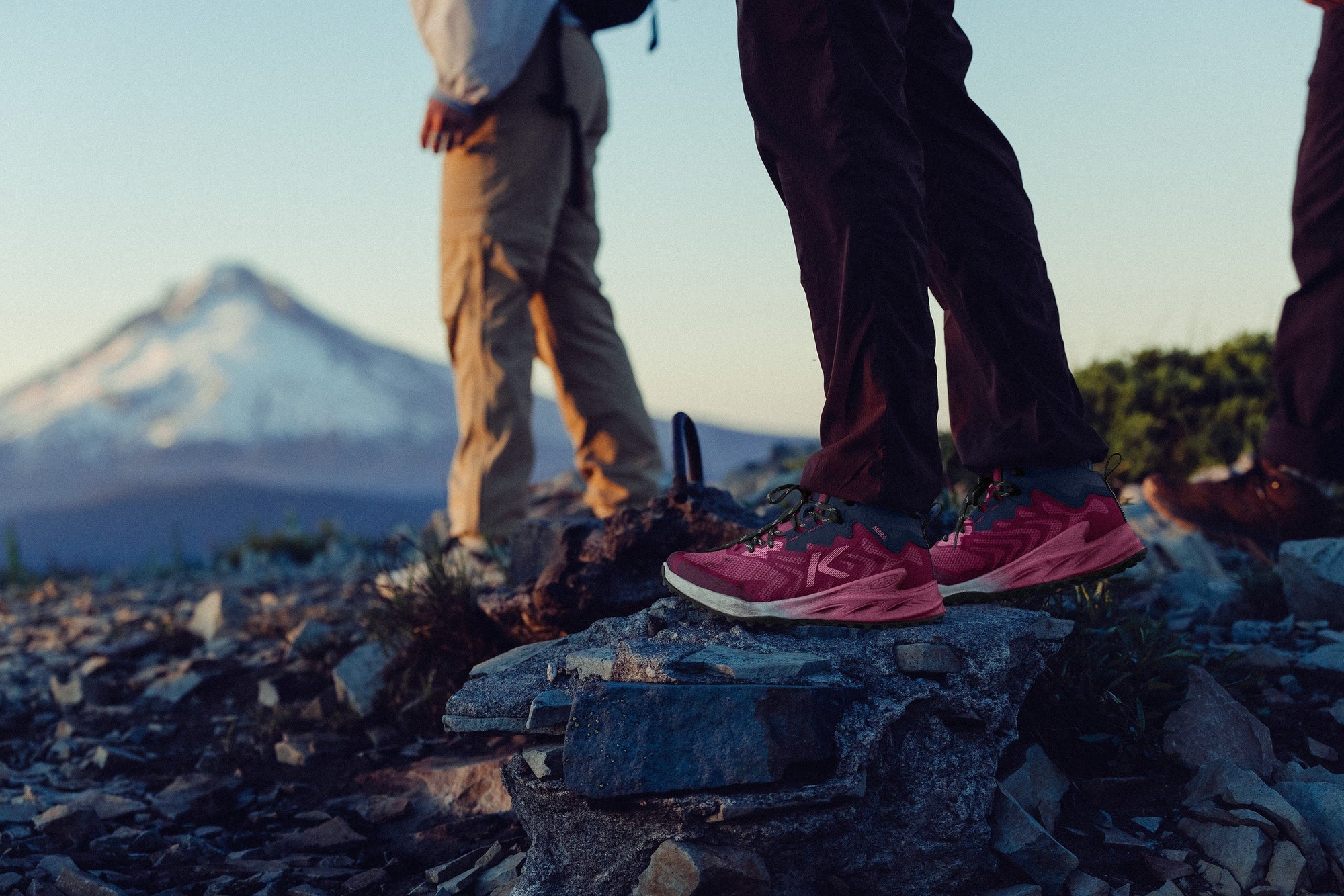If you’re like us here at KEEN, you have your favorite shoes, layers, and gear that see a lot of use. We believe the most sustainable gear you can buy is the stuff that you can use season over season and year after year.
Fortunately, there’s loads of high-quality gear that’s versatile and durable enough for year-round use. But even the most bomber gear requires proper care to keep it functioning over time. Caring for your gear means it will take good care of you. Think dry, warm, and comfortable — trip after trip.
Here are our top tips to keep your outdoor gear in prime condition and ready for all those adventures that are still just ideas in your head.
Dry It Out
Jackets, baselayers, shoes, sleeping bags, tents, packs, ropes: you name it, it’s all going to get wet at some point. Getting wet is OK. The important thing is that you make sure to thoroughly dry all gear before packing it back into its stuff sack, storage box, closet, or drawer. This may not always be possible mid adventure. Cramming a wet tent into a stuff sack on a rainy morning never feels good, but it’s occasionally necessary. And it’s ok for the short term. It’s over the longer term (ideally more than a handful of hours) that thorough drying is important. A little bit of moisture can lead to mold, delamination, and reduced performance. Dry gear is happy gear!

Store It Properly
After it’s dry, make sure you store it right. A cool, dry place away from direct sun and any direct heat source is the ideal scenario for virtually all outdoor gear. Basements and garages are great options, but if you live in a damp climate, your space is not entirely dry, or the space sees large temperature swings, be sure to store it in a sealed container or opt to keep it in a closet indoors. Camping items like tents and sleeping pads can be stored in their stuff sacks. But it’s best to store your sleeping bag in the larger stuff sack it came in, rather than the small one used for packing it on a trip.
Wash It
A little dirt won’t hurt your outdoor gear, but routine washing is important. If your tent is dusty or muddy after an extended trip, try setting it up in the yard on a sunny day, gently hosing it down, and letting it dry thoroughly. For clothing, routine washing is key for base and mid layers. We recommend using an enzyme-based detergent like DeFunkify to help fight the funk factor that is all too common with synthetic layers over time. Enzyme-based detergents fight the stinky bacteria naturally without the use of chemical-based perfumes. Best of all, they actually work!
Washing is important for sleeping bags, technical outerwear, and insulated jackets, too, but it’s a yearly thing, not an after-every-trip thing. There are a number of specialty detergents designed for this. We recommend you follow the manufacturer’s directions on your gear for the best results. When it comes to cleaning hiking shoes, sandals, and boots, read our shoe care tips.

Repair It
Accidents happen. Tree branches cause tears. Sparks fly and melt holes. Sharp rocks damage tents. Fortunately, there are several great DIY repair solutions available for patching jackets, sleeping bags, and tents.
You can use Tenacious Tape Patches for repairing a large variety of materials ranging from nylon and polyester to rubber and vinyl. It’s super easy to use, just peel and stick. It’s satisfying to extend the life of your favorite jacket, and a patch is like a badge of honor to remind you of past adventures.
When it comes to worn out zippers, large tears, damaged or lost insulation, or broken buckles, many larger brands offer repair services regardless of the age of your item. There is a cost for repairs, but it’s far less than the cost of replacement. Here in Portland, Mountain Soles and Outdoor Threads offer professional repair services for a wide range of gear from jackets and tents to packs and boots, and they do business via the mail, so you can send your gear from anywhere in the country.
Renew It
Hey, why does my waterproof jacket look like it’s getting wet? It’s a common concern. And one that’s usually pretty simple to solve. Virtually all modern outerwear includes what’s called a durable water repellent (DWR) finish. It's what makes water bead up and roll off the outside of a jacket (or pants). Even a jacket with a waterproof membrane inside uses a DWR on the outer fabric to prevent water from saturating it. DWR finishes do not last forever. But a fading DWR doesn’t mean the end of a jacket either.
There are several easy ways to renew a DWR finish. The simplest is to wash your jacket and tumble it dry. Be sure to read the care tag for your product, but cleaning it with a mild detergent followed by a gentle spin in the dryer on a moderate heat setting does wonders for renewing water repellency. For the best results, try a commercially available specialty detergent that’s specifically designed for outdoor gear. Spray-on varieties are also available. Just spray on and tumble dry. Not all DWR finishes are created equal from an environmental perspective. Be sure to look for a PFAS-free DWR when choosing gear or renewing a DWR finish. We like NikWax products because they are all PFAS-free (just like KEEN shoes!).
Related: What Is PFAS Free?
Caring for your outdoor gear is about more than just enjoying your next adventure, it’s about living more sustainably. Routine cleaning and common-sense care go a long way toward keeping your stuff ready for adventure. Take the next steps to repair and renew your gear as necessary, and it will last a literal lifetime.













